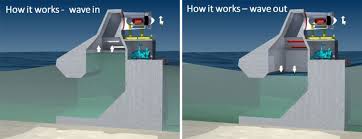
Breaking News
6.5x55 Swedish vs. 6.5 Creedmoor: The New 6.5mm Hotness
Best 7mm PRC Ammo: Hunting and Long-Distance Target Shooting
 Christmas Truce of 1914, World War I - For Sharing, For Peace
Christmas Truce of 1914, World War I - For Sharing, For Peace
Top Tech News
 EngineAI T800: Born to Disrupt! #EngineAI #robotics #newtechnology #newproduct
EngineAI T800: Born to Disrupt! #EngineAI #robotics #newtechnology #newproduct
 This Silicon Anode Breakthrough Could Mark A Turning Point For EV Batteries [Update]
This Silicon Anode Breakthrough Could Mark A Turning Point For EV Batteries [Update]
 Travel gadget promises to dry and iron your clothes – totally hands-free
Travel gadget promises to dry and iron your clothes – totally hands-free
 Perfect Aircrete, Kitchen Ingredients.
Perfect Aircrete, Kitchen Ingredients.
 Futuristic pixel-raising display lets you feel what's onscreen
Futuristic pixel-raising display lets you feel what's onscreen
 Cutting-Edge Facility Generates Pure Water and Hydrogen Fuel from Seawater for Mere Pennies
Cutting-Edge Facility Generates Pure Water and Hydrogen Fuel from Seawater for Mere Pennies
 This tiny dev board is packed with features for ambitious makers
This tiny dev board is packed with features for ambitious makers
 Scientists Discover Gel to Regrow Tooth Enamel
Scientists Discover Gel to Regrow Tooth Enamel
 Vitamin C and Dandelion Root Killing Cancer Cells -- as Former CDC Director Calls for COVID-19...
Vitamin C and Dandelion Root Killing Cancer Cells -- as Former CDC Director Calls for COVID-19...
 Galactic Brain: US firm plans space-based data centers, power grid to challenge China
Galactic Brain: US firm plans space-based data centers, power grid to challenge China
"Artificial blowhole" generates electricity from ocean waves

Ocean waves could be one such thread, and Australian company Wave Swell Energy is developing a new device to harvest that energy. New Atlas spoke to Dr. Tom Denniss, the CEO of the company, to find out about the technology.
With the Paris Agreement coming into force last November, almost 200 countries around the world pledged to fight to keep global temperatures from rising more than 2° C (3.6° F) above pre-industrial levels by the end of the 21st century. It's an ambitious and crucial goal, and exploring and exploiting renewable energy sources will play a key role in achieving it.
2016 was a boom year for solar power, and renewables as a whole overtook coal to become the world's largest source of installed power capacity. But nature isn't easily tamed: wind farms and solar arrays are at the mercy of the elements, so the more diverse our renewable energy mix, the more reliable the power grids of the future will be.
The endless motion of the ocean is a great resource, and we've seen some creative methods to try to tap into that energy. Point absorber systems use a buoy to drive an underwater hydraulic system, while Gibraltar's wave energy station is mounted onto a jetty, where it converts the rise and fall of waves into fluid pressure.

 The State's Last Stand
The State's Last Stand


